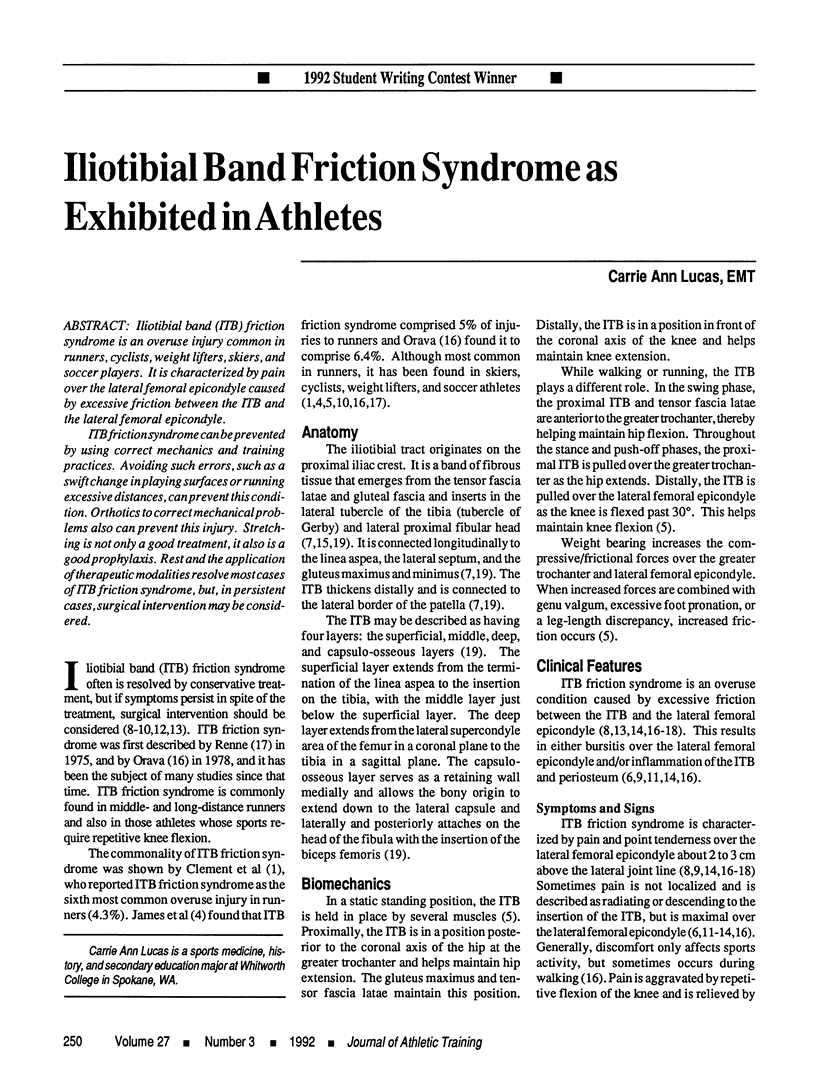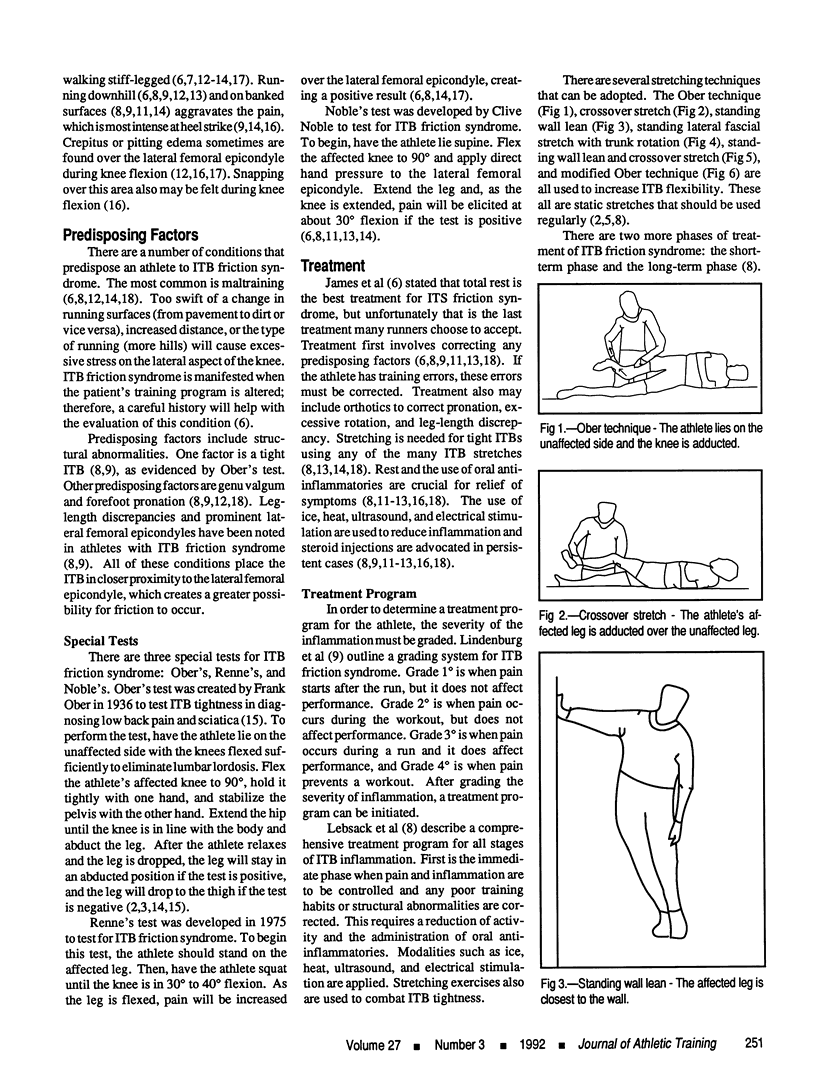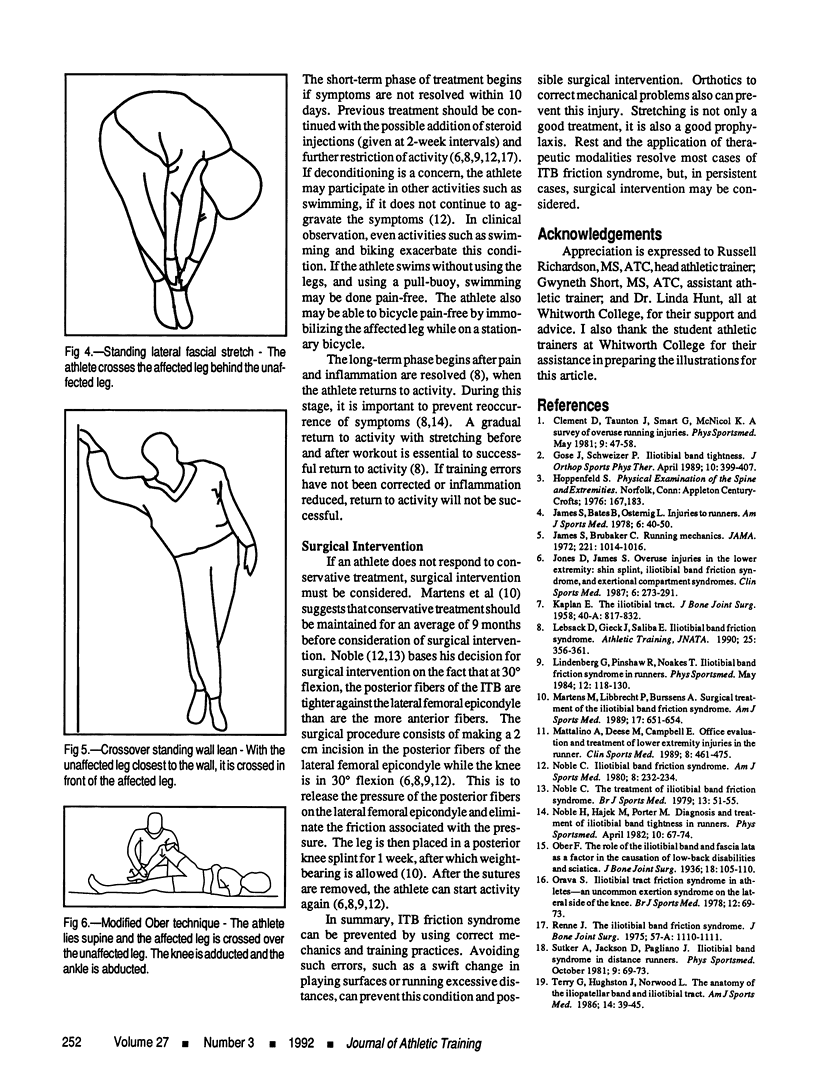Abstract
Iliotibial band (ITB) friction syndrome is an overuse injury common in runners, cyclists, weight lifters, skiers, and soccer players. It is characterized by pain over the lateral femoral epicondyle caused by excessive friction between the ITB and the lateral femoral epicondyle.
ITB friction syndrome can be prevented by using correct mechanics and training practices. Avoiding such errors, such as a swift change in playing surfaces or running excessive distances, can prevent this condition. Orthotics to correct mechanical problems also can prevent this injury. Stretching is not only a good treatment, it also is a good prophylaxis. Rest and the application of therapeutic modalities resolve most cases of ITB friction syndrome, but, in persistent cases, surgical intervention may be considered.
Full text
PDF


Selected References
These references are in PubMed. This may not be the complete list of references from this article.
- James S. L., Bates B. T., Osternig L. R. Injuries to runners. Am J Sports Med. 1978 Mar-Apr;6(2):40–50. doi: 10.1177/036354657800600202. [DOI] [PubMed] [Google Scholar]
- James S. L., Brubaker C. E. Running mechanics. JAMA. 1972 Aug 28;221(9):1014–1016. [PubMed] [Google Scholar]
- Jones D. C., James S. L. Overuse injuries of the lower extremity: shin splints, iliotibial band friction syndrome, and exertional compartment syndromes. Clin Sports Med. 1987 Apr;6(2):273–290. [PubMed] [Google Scholar]
- KAPLAN E. B. The iliotibial tract; clinical and morphological significance. J Bone Joint Surg Am. 1958 Jul;40-A(4):817–832. [PubMed] [Google Scholar]
- Martens M., Libbrecht P., Burssens A. Surgical treatment of the iliotibial band friction syndrome. Am J Sports Med. 1989 Sep-Oct;17(5):651–654. doi: 10.1177/036354658901700511. [DOI] [PubMed] [Google Scholar]
- Mattalino A. J., Deese J. M., Jr, Campbell E. D., Jr Office evaluation and treatment of lower extremity injuries in the runner. Clin Sports Med. 1989 Jul;8(3):461–475. [PubMed] [Google Scholar]
- Noble C. A. Iliotibial band friction syndrome in runners. Am J Sports Med. 1980 Jul-Aug;8(4):232–234. doi: 10.1177/036354658000800403. [DOI] [PubMed] [Google Scholar]
- Noble C. A. The treatment of iliotibial band friction syndrome. Br J Sports Med. 1979 Jun;13(2):51–54. doi: 10.1136/bjsm.13.2.51. [DOI] [PMC free article] [PubMed] [Google Scholar]
- Orava S. Iliotibial tract friction syndrome in athletes--an uncommon exertion syndrome on the lateral side of the knee. Br J Sports Med. 1978 Jun;12(2):69–73. doi: 10.1136/bjsm.12.2.69. [DOI] [PMC free article] [PubMed] [Google Scholar]
- Renne J. W. The iliotibial band friction syndrome. J Bone Joint Surg Am. 1975 Dec;57(8):1110–1111. [PubMed] [Google Scholar]
- Terry G. C., Hughston J. C., Norwood L. A. The anatomy of the iliopatellar band and iliotibial tract. Am J Sports Med. 1986 Jan-Feb;14(1):39–45. doi: 10.1177/036354658601400108. [DOI] [PubMed] [Google Scholar]


